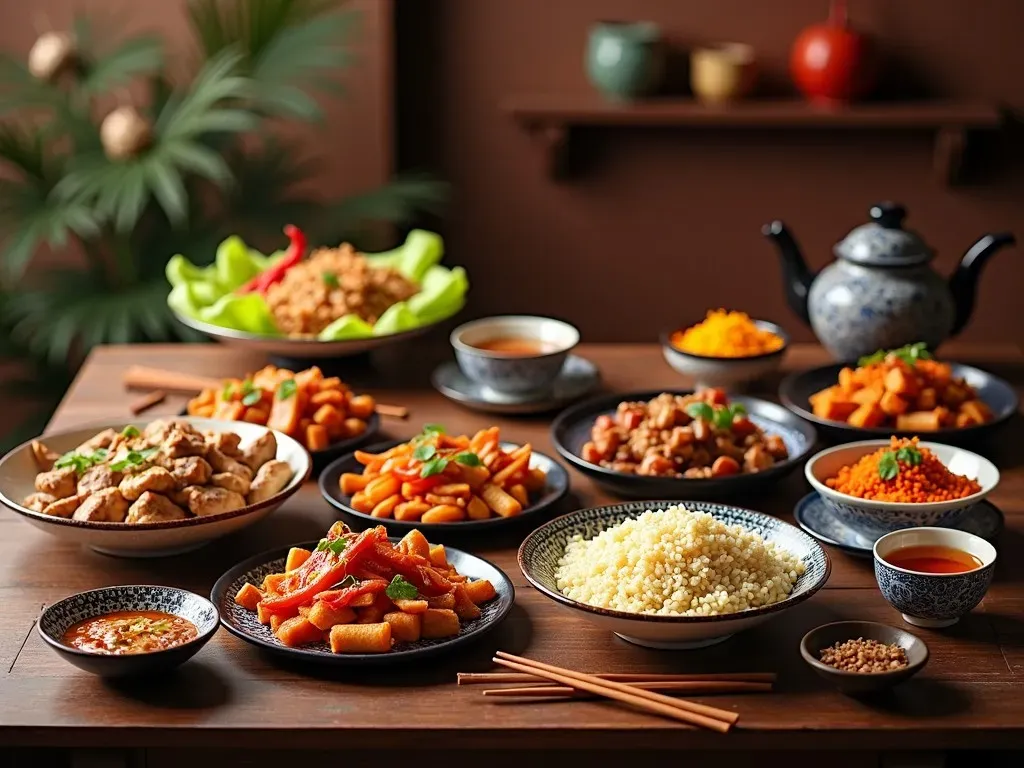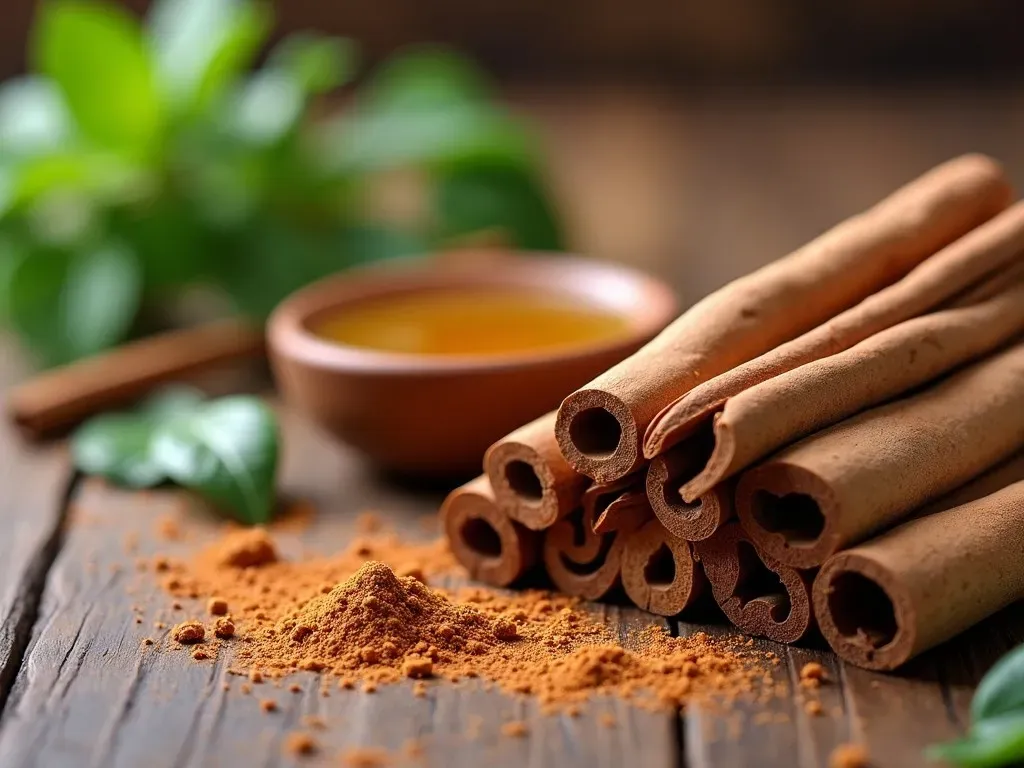China cinnamon, also known as cassia or Chinese cinnamon, comes from the Cinnamomum cassia tree, a species native to southern China and widely cultivated across Asia. This aromatic spice is renowned for its rich flavor and versatile uses, making it a staple in kitchens around the globe. If you’ve ever enjoyed a warm bowl of cinnamon oatmeal or a sprinkle of cinnamon in your favorite dessert, chances are you experienced the delightful taste of China cinnamon without even realizing it!
What is China Cinnamon?
China cinnamon, scientifically known as Cinnamomum cassia, is a type of bark that has been used as a spice and medicine for centuries. Unlike Ceylon cinnamon, often referred to as “true cinnamon,” China cinnamon has a stronger, more pungent flavor. Indigenous to southern China, it is commonly found in dishes throughout Asia, particularly in Chinese cuisine, where it contributes aromatic depth to savory and sweet foods alike.
Comparison of Cinnamon Types
| Type of Cinnamon | Scientific Name | Flavor Profile | Common Uses | Origin |
|---|---|---|---|---|
| China Cinnamon | Cinnamomum cassia | Strong & Pungent | Baking, Cooking | Southern China |
| Ceylon Cinnamon | Cinnamomum verum | Mild & Sweet | Gourmet Dishes | Sri Lanka |
| Saigon Cinnamon | Cinnamomum loureirii | Spicy & Sweet | Specialty Desserts | Vietnam |
| korintje cinnamon | Cinnamomum burmannii | Sweet & Robust | American Baking | Indonesia |
Why is China Cinnamon so Popular?
China cinnamon dominates the market due to its accessibility and affordability. It is the most commonly available form of cinnamon in grocery stores across the United States and East Asia. Its bold flavor profile makes it ideal for a variety of recipes, especially in baking, where it pairs well with apples, sweet potatoes, and many Other desserts.
Nutritional Benefits of China Cinnamon
China cinnamon is not just a flavorful addition to meals; it is also packed with health benefits. Here are some key nutritional facts:
| Nutritional Component | Amount per Teaspoon (2.6 g) |
|---|---|
| Calories | 6 |
| Carbohydrates | 2 g |
| Fiber | 1 g |
| Calcium | 24 mg |
| Iron | 0.2 mg |
Health Benefits
- Antioxidant Properties: Contains compounds that fight free radicals in the body.
- Anti-inflammatory Effects: May help reduce inflammation, aiding in chronic disease management.
- Blood Sugar Regulation: Some studies suggest that cinnamon can improve insulin sensitivity and lower blood sugar levels, particularly beneficial for those with diabetes.
Reference Video
Culinary Uses of China Cinnamon
The versatility of China cinnamon makes it a favorite in many culinary traditions. Here are some popular ways to use it:
- Baking: Commonly used in baked goods like cakes, cookies, and muffins.
- Savory Dishes: Adds richness to stir-fries, braised meats, and curries.
- Beverages: Enhances flavors in teas and coffees, often used in chai recipes.
- Desserts: Key ingredient in apple pie and rice pudding.
Iconic Dishes Featuring China Cinnamon
- Chinese Five Spice: A blend that includes China cinnamon, an essential spice in many Chinese dishes.
- Chicken with Cinnamon: A classic recipe featuring chicken cooked with cinnamon and other aromatic spices.
- Spiced Pumpkin Soup: Adds depth to creamy pumpkin soups.

How to Use China Cinnamon in Your Kitchen
When incorporating China cinnamon into your cooking, consider these tips:
- Quantity: Use sparingly due to its strong flavor; start with a pinch and adjust to taste.
- Storage: Store in a cool, dark place in an airtight container to maintain freshness.
- Pairing: Compliments well with spices like nutmeg, cloves, and ginger in both sweet and savory applications.
Origin and Cultivation
China cinnamon is primarily cultivated in the provinces of Guangdong, Guangxi, and Yunnan in China. The cassia tree thrives in a well-drained, warm climate and can reach heights of up to 30 meters. Harvesting occurs about two years after planting, with farmers pulling back the bark to allow new growth for future harvests.
Interesting Historical Fact
Historically, cinnamon has been highly valued across cultures. In ancient times, it was considered more precious than gold, frequently used as a trade commodity and gift among emperors and dignitaries.
Frequently Asked Questions (FAQs)
What is the difference between China cinnamon and Ceylon cinnamon?
The primary difference lies in flavor and coumarin levels. China cinnamon (cassia) has a stronger taste and higher coumarin, which can be harmful in large amounts. Conversely, Ceylon cinnamon is milder and considered safer for everyday use.
Why is China cinnamon cheaper than other types?
China cinnamon is more widely cultivated and harvested in larger quantities compared to Ceylon, making it more accessible and affordable.
How can I tell if I am buying China cinnamon?
China cinnamon is usually darker and has a thicker, more rugged texture compared to the lighter and softer Ceylon cinnamon. It may also be labeled as “cassia” in stores.
Can I substitute China cinnamon for Ceylon cinnamon in recipes?
Yes, but keep in mind that the flavor profile will be different. Adjust the quantity based on your preference.
For further reading on the types of cinnamon and their uses, you can visit Healthline.

Conclusion
China cinnamon is undoubtedly a culinary delight that enriches flavors while providing numerous health benefits. Whether you’re baking a warm treat or simmering a savory dish, this aromatic spice serves as an indispensable kitchen staple that can elevate any recipe. With its rich history, diverse uses, and health-promoting properties, it’s clear that China cinnamon deserves a prime spot in your pantry.
